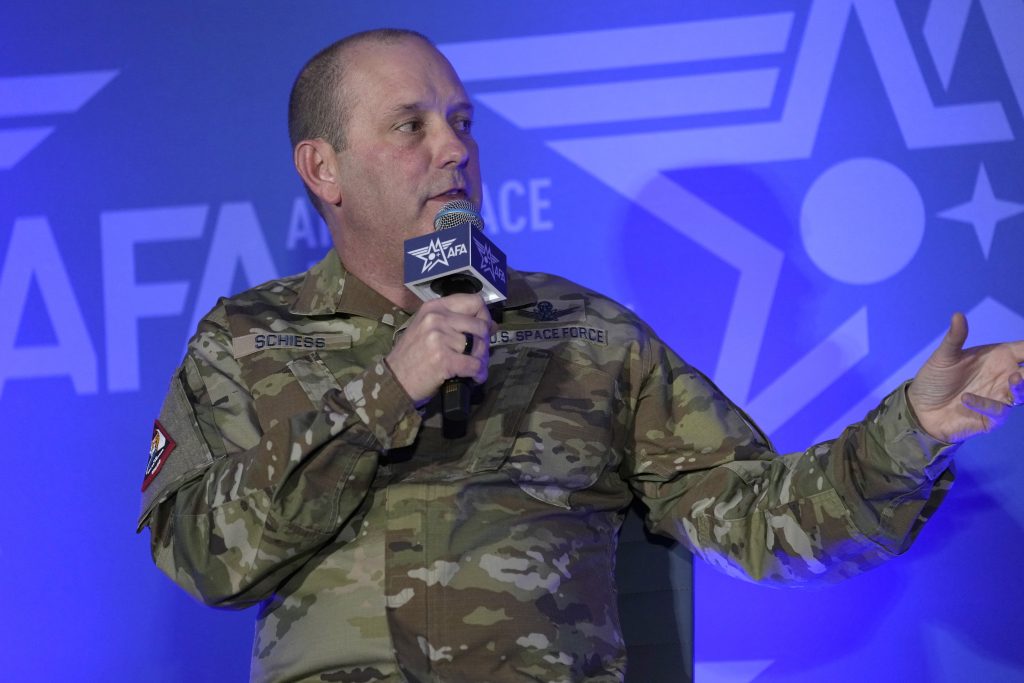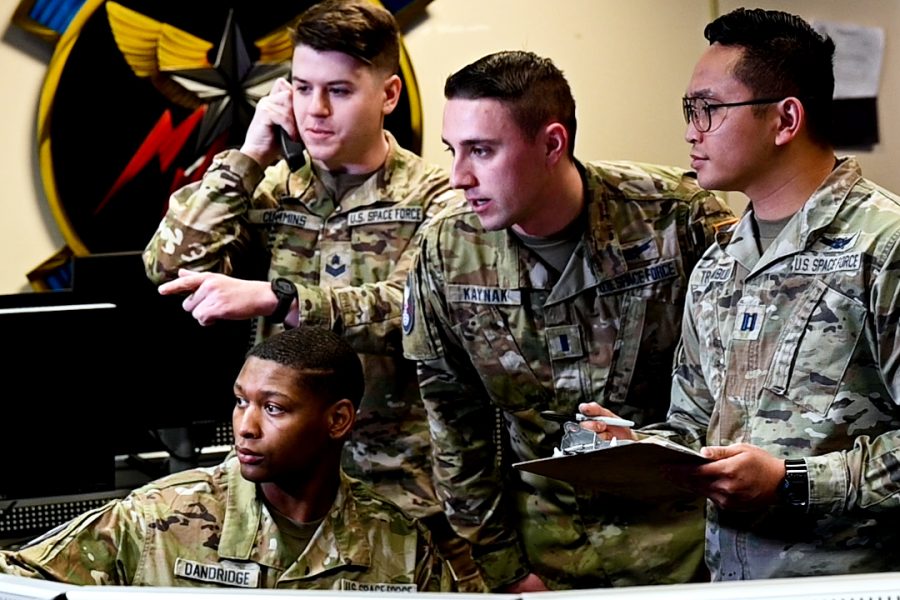AURORA, Colo.—Just as the Air Force is switching up how it packages troops for deployments, the Space Force will implementing “combat squadrons,” establishing a means for divvying up operations and readiness functions for space units that usually deploy in place, leaders said the AFA Warfare Symposium.
Today, Space Operations Command presents forces to combatant commands, typically U.S. Space Command, as full squadrons and deltas, through its newly established Space Forces-Space component, commanded by Lt. Gen. Douglas A. Schiess. That means unit commanders must juggle operations—flying satellites, gathering intelligence, conducting cyber work—with day-to-day readiness issues.
“If I need this number of elements to do the mission 24/7 and I force present them, well, then you need a number of elements over here to get ready to do that,” Schiess told reporters. “What we’ve done in the past is they’re both doing that all the time. And so that gets to … exhaustion—‘I just came off a shift and now I’ve got to go to training. And I’ve got a new person coming in and I’ve got to get them ready.’”
The combat squadrons concept will break down units into smaller crews and rotate them through phases under the Space Force Generation Model, which designates phases that units must cycle through.

Once presented to SPACECOM, a squadron no longer works for Space Operations Command, Schiess said. “They work for the Space Forces-Space and they’re doing the mission for that. Also during that time, they don’t have to worry about bringing on new capabilities ,they don’t have to worry about training new folks to get ready to feed into the mission to be able to do that. They have their crew that is ready to do their mission.”
Brig. Gen. Devin Pepper, vice commander of Space Operations Command, said SpOC intends to follow an “eight-crew model.”
“So five of the crews, whatever system they’re operating, will be in what’s called the combat period, and the other three crews will be in what we call the Prepare and Ready phase,” Pepper told reporters. “Those are all the phases you need to take leave, go to school, do life, so to speak, and then also do the training that you need to get ready to prepare for the combat period.”
The Space Force already follows a similar system for its electronic warfare teams, and it’s similar to the Air Force’s four-phased approach to operational readiness under the Air Force Force Generation model, or AFFORGEN.
The commander of a combat squadron “may be a captain or a lieutenant now who’s responsible for that crew that’s in the combat period,” Pepper said. Meanwhile, regular squadron and delta commanders can focus completely on readiness and training.
When troops aren’t physically deploying, the change is partially just about a mindset shift said Schiess, who compared it to his first job in the Air Force, when he was as a missileer.
“I was part of the squadron, I got prepared, I would do training,” Schiess said. “But when I went to the alert facility, I didn’t work for the Air Force anymore, I worked for Strategic Command.”
The Department of the Air Force push to designate deployable or mission-focused “units of action” for both the Air Force and Space Force is part of its larger effort to re-optimize for great power competition. But there are still details that need to be worked out—Schiess noted that the USSF is still working on the naming conventions for combat squadrons.
“We’re still working through, does that become the 2nd Combat Squadron or 2nd Space Operation?” he said.

